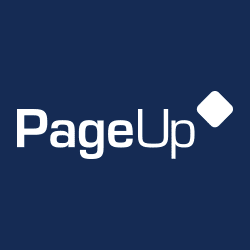Early in the 20th century, Austrian-born economist Joseph Schumpeter coined the phrase “creative destruction” to describe the disruptive process of ongoing technological and economic innovation within capitalism. In his day, theories of disruption were developed to describe the cycles of change that were a part of normal market forces. Little did Schumpeter know that the landscape of business in the early 21st-century would be dominated by ever-shorter intervals of volatile disruption that would radically redefine the very concept of “normal.”
Today, we live in a world where creative destruction is happening faster than we can react. Whether the radical changes are in products, services, experiences, technology or organisationalorganizational models, we seem to have entered an age of perpetual instability in business and society where the new mantra is “disrupt or be disrupted.”
Today’s leaders generally espouse one of two views about disruption. Some see the concept as a glorified buzzword that is used mainly by Silicon Valley start-ups looking to create unique solutions to non-existent problems. In this view, disruption is not organic, but manufactured, attacking continuity for the sake of change and the hope of being the next Unicorn. Others see disruption as a natural consequence of our age of increasing complexity, but view it as a force that is “pushing from the outside” – effectively bullying organisationsorganizations into upending their present-day offerings or approaches. This mindset causes leaders to be reactive in the face of accelerating changes in business and society.

A New Approach
What if we could create a third view of disruption that enables us to build future-oriented organisationsorganizations that aren’t constantly in the act of chasing or being chased? To build such a proactive culture, we need to look beyond the present research – which is mostly concerned with recognising where disruption is coming from or how to avoid it. Though such research is important, it leads us to a reactionary response that is based in risk and fear. Transcending disruption in an age of increasing complexity means that we must change our organisationalorganizational focus: instead of fixating on the idea of disruption “pushing from the outside,” we must adopt a new mindset of “pulling” our organisationsorganizations towards disruption. Whereas being pushed by external forces puts leaders constantly on the defensive, the concept of pulling your firm towards something puts you in the driver’s seat.
In the Schumpeterian language of creative destruction, a focus on having something pushed upon us is akin to approaching the process of disruption from the “destruction” side: What is being destroyed? Who is causing the destruction? How can I be the first to deconstruct or dismantle existing products, services or models?
Conversely, an organisationorganization that focuses on pulling itself towards destruction can harness the creative aspects of Schumpeter’s theory: What opportunities are we yet to recognize? How can we move beyond our present capabilities? How can we become more adaptive, resilient and transformative? This is not to say that both sides of the equation aren’t important, but focusing only on the destruction side of disruption leaves organisationsorganizations weakened and vulnerable.
Three approaches empower us to transcend disruption and embrace a mindset of pulling ourselves – and our organisationsorganizations – to the outside.

1. Speculative Inquiry
This is the practice of continually learning, unlearning and relearning in order to “disrupt disruption.” Speculative Inquiry helps us to unlearn and relearn by launching us past public-facing knowledge and ideas, traditional competitive or business intelligence, present-day issues and pervasive technologies. Instead, the leaders and organisationsorganizations that desire to transcend disruption are looking for provocative futures and far-reaching breakpoints of change – emerging possibilities and alternatives that result from the collision of today’s environmental and horizon scanning efforts. These possibilities aren’t identified through fanciful brainstorming exercises, but rather are the result of pattern recognition methodologies and tools – the clustering of trends, shifting values, implications and the subsequent new landscape of change that help us to “recolonize” the future and make sense of the world of tomorrow. Once identified, it is the tension between this speculative scanning and the immediate core competencies of the organisationorganization that creates a middle ground of transcendent “futures intelligence” that can reveal new strategies, innovations, platforms and models.

2. Multi-Faceted Strategy
It has been noted that whenever we make a decision, we kill every future except one. Our mechanical view of organisationalorganizational development has taught us that we must choose one “official future” from among many possibilities, and tie our fortunes to that one decision. However, McGill Professor Henry Mintzberg has said, “Planners should make their contribution around the strategy-making process rather than inside it. They should supply the formal analyses or hard data that strategic thinking requires, as long as they do it to broaden the consideration of issues rather than to discover the one right answer.” Multi-Faceted Strategy is a process by which we include multiple alternative futures in every one of our decisions, making our strategy and actions agile, elastic, adaptive and transformative. Beginning with the long-range aspirations, goals and opportunities that an organisationorganization has identified, we can compress and synthesize these actions and ideas into a robust strategy. In this way, organisationsorganizations are able to pull themselves to the outside to design transformational vision and new core capabilities.

3. Higher-Order Purpose
The last approach needed to transcend disruption is the identification of the higher-order purpose of the organisationorganization. Each business or social entity contains not only the seeds of greater potential, but also of greater mission and aspirational ability. Discovering that purpose and pulling yourself towards it requires the mapping of transformational growth curves that begin with your organisationorganization’s nascent competency and ascend through multiple breakpoints and breakthroughs. Those breakthroughs and higher-order purpose are inherent in the DNA of your products, services and models, but don’t look like glorified versions of the original that have simply been teased out through incremental iterations. Instead, each breakthrough leads to new complex manifestations of the original, and opens the organisationorganization to new ways of seeing itself and unique opportunities to pull itself to the outside.
As organisationsorganizations move past the concepts of top, bottom and lateral disruption to a more liberating and empowering mindset of transformation, they will find that the “unknowns” that once pushed them from the outside will instead become their greatest assets. If we learn to intentionally pull ourselves to the outside – and pull the outside into our organisationsorganizations – we can foster a creative force beyond what Schumpeter could have possibly imagined.
This piece was taken from the PageUp publication, CLIFFHANGER – HR on the Precipice in the Future of Work which addresses the major factors impacting the current HR and business landscape. To learn more about the book and download a free chapter, click here.
Fresh insights for HR
Stay up to date with HR trends, tips and more when you sign up for our industry newsletter






